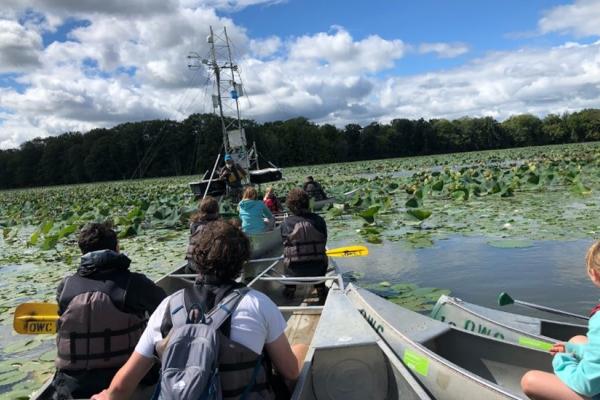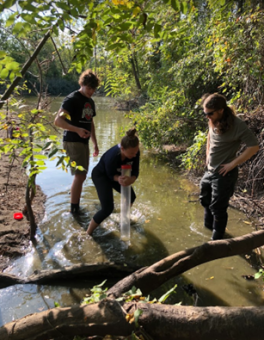SES Graduate Students Examine Coastal Processes at Lake Erie


In September, a class of 10 SES students visited the shores of Lake Erie to collect data for their graduate-level seminar on Coastal Processes. The seminar is being taught by Professors Derek and Audrey Sawyer and focuses on pressing coastal research topics ranging from beach erosion to water contamination. On the 3-day field trip, students engaged in two data collection mini-projects that combined elements of hydrology, water quality, carbon cycling, sediment transport, and shoreline stability

The first project examined connections between Lake Erie and Old Woman Creek, a freshwater estuary in NOAA’s National Estuarine Research Reserve System. The goal was to understand how groundwater transports carbon and nutrients through a beach barrier that separates the wetland from the lake.
Students learned how to install seepage meters to observe the flow of groundwater through the sand barrier and collect water samples for analysis of dissolved organic carbon and nutrients. The class also took a guided canoe trip into the wetland to visit the eddy covariance flux tower, where Professor Gil Bohrer (Civil, Environmental and Geodetic Engineering) explained his group’s long-term research on methane and carbon dioxide emissions from the wetland. The second project examined the sedimentological characteristics of the Old Woman Creek wetland-barrier-nearshore system and an excursion to Lake Erie Bluffs state park to collect sediment samples at the toe of actively eroding bluffs.
The plan over the rest of the semester is to analyze the data collected and ultimately present two student-led posters at the 2nd Annual Interdisciplinary Water Research Symposium in November.
Contributed by Derek and Audrey Sawyer
